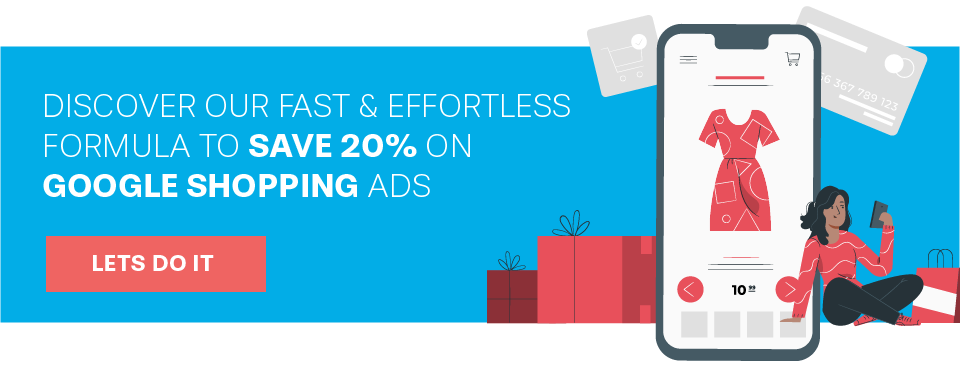A step-by-step guide on how to create a complete eCommerce digital marketing strategy in 2021
We are living in a highly saturated digital world that is getting more and more crowded with information, where competition is on the rise, especially as we’ve entered a new year.
Looking at the eCommerce landscape, the percentage of online sales has been growing consistently with each passing quarter for years. What does that mean for businesses? That there is no better time than now to start attracting the right customers and to build a strong eCommerce digital marketing strategy for 2021. No eCommerce business can succeed without a plan, so if you want to keep your sales coming, we have a handful of tactics in our step-by-step guide on how you can create your own complete digital marketing strategy.
First of all, let’s start with the basics.
Why do you need a digital marketing strategy?

Having a clear digital marketing strategy plan in place means that you’ve decided on the steps and actions that your business must take to achieve its specific digital goals. These well-planned steps are then directed and applied through carefully selected online marketing channels, either paid, earned or owned media.
When it comes to eCommerce, the goal is to drive the top of the funnel traffic to convert into sales and loyal customers ultimately. With an effectively planned and applied digital marketing strategy process, you can drastically drive brand awareness and increase sales. You can do so by promoting your goods or services through your online channels (website and social media pages), as well as via paid advertising, email marketing and text messages.
Accelerator
Having a cohesive digital marketing message across all these digital platforms will save you time and effort by not recreating messages for each channel.
Step 1. Know your audience, goals and objectives
The golden rule that we love to put forward is that you need to know who you are marketing to (digitally or not). When crafting a digital marketing strategy, you should always build it upon a detailed buyer persona, so your first step is to build your perfect target persona.
Because we know this is a crucial step in achieving your digital marketing goals, we have a FREE Target Persona Guide that you can download to find out what makes your potential customers tick!
A good starting point would be to analyse your existing audience(s), understand who you want to sell to and where you can find them. You can then start thinking about the new marketing content, plans, and actions that you want to implement progressively.
So, you know your audience and know you start thinking about your business goals. You must be very specific and clear in what you want to achieve, so a good idea is to set a percentage of increase (such as an increase in online sales by 20% during a specific period). If this is your goal, then it means that your marketing team might set an objective of generating 50% more leads via your website than the previous period to help you achieve your initial goal.
But don’t forget to measure your digital marketing strategy’s success by using the right digital marketing tools. Once you know your goals and objectives, you can start working on the specific ways of generating conversions and making those sales happen.
Step 2. Evaluate your existing digital channels and platforms

The next thing you need to do in your digital marketing strategy to increase sales is to look at your current digital marketing channels. What channels and platforms are you currently using and why? Are they SEO optimised?
Have an in-depth look at what’s working and what’s not, and evaluate what’s best for you and what you need to change or improve.
Accelerator
Make sure to keep an eye on the Google Algorithm Update for 2021 to stay ahead of your competition!
When it comes to correctly implementing SEO on your website, we know that things can get pretty wild, so that’s why we have a FREE SEO guide, along with a FREE SEO Health Checklist that you can easily download to put your mind at ease. Our second golden rule? SEO is a vital part of any digital marketing strategy!
Start by reviewing all your digital channels, all the way from your website, social media channels and any other online offerings that you have ongoing. Take into consideration how people have been engaging with your brand, what maintained their interest consistent and why, and try to replicate what has been working well so you can get the same results again (if not better).
The most important thing is to focus on what has worked in the past, and release stubbornness for what hasn’t (despite the hard work that has been invested in your previous digital marketing campaigns, sometimes admitting that moving forward you might not achieve your desired results could be the best thing you can do). Give new ideas a go, think outside the box and always remember about A/B testing, because what works well now can always work better in the future.

Step 3. Content Marketing Strategy
When it comes to this step, we have to say one thing – content marketing is King in digital marketing! Having high-quality and entertaining content applies to all eCommerce digital marketing strategies, which means blogs, product descriptions, website content, newsletters, etc. You must focus on the names, descriptions and details of your products, as people love to read and inform themselves before making a purchase. This is where keywords go hand in hand with your SEO, and if you do it right, you will give your search rankings a boost, which will allow prospective clients to find you much more comfortable.
Based on the gaps and findings you’ve discovered in Step 2, you can now start crafting a content creation plan that will clearly outline the necessary content that will help you hit your digital marketing goals.
Accelerator
You can make a simple spreadsheet, and for more control over your plan, you can include budget information if you are planning to outsource content creation for your brand. We have a great blog with a beginner’s guide to content marketing, so make sure to head over there for an in-depth content marketing lesson!
Step 4. Choose your digital marketing methods
When plotting your digital marketing planning and strategy, a step that most businesses seem to miss is to put together a list of tactics and the marketing channels you want to leverage in your new digital marketing strategy.
You have the audience, the goals and objectives, SEO and content marketing all sorted, and now you must prioritise which channels and tactics you want to spend the most time and money on. To do so, clearly write down your goals for each channel. You should try and spend most of your time on this step along with your marketing team because it will become your road map to implement your strategy throughout 2021.

Set up a timetable and divide the responsibilities for each channel, whilst specifically assigning people to each task. At this point, the organisation is everything! Now you can take this specific plan and put a price tag on each of the digital channels.
Questions to ask are:
- Where do I want to spend the bulk of my digital marketing budget?
- How much will I assign for paid advertising?
- What about email marketing?
- Do I want to hire a social media manager to write posts, respond to comments, and increase my social media presence overall?
As you go through crafting your budget, put a projected ROI on each item. That way, you will be able to determine your digital marketing success by the end of 2021.
Accelerator
Set benchmarks (such as each quarter), so you can adjust your digital marketing tactics if your initial goals haven’t been met throughout the year.
Step 5. Pay-Per-Click Advertising
Another critical step to creating a digital marketing strategy that will show real results is pay-per-click advertising. For an eCommerce business focused on growth, PPC can create immediate leads if the ads are successful, of course.
Quick tips for creating ads that will deliver are:
- Focus on long-tail keywords
- Make the most out of Google Merchant Centre and Shopping Ads
- Include a unique selling point (USP) (% off, free shipping, etc.)
- Make your ad copy and landing page relevant (to speak directly to the searches people are typing to find your service or product)
When crafting your ads, keep in mind that there are several ads, but your focus should be on the big 3: Paid Search Ads, Display Ads and Shopping Campaigns (Product Listing Ads).
Another golden tip that we have for you is to leverage the power of social media advertising, and that means Instagram, Facebook and Pinterest Ads. All these visual channels are a much more effective way to nurture leads and to transform prospective customers into loyal advocates. Also, on social media, you can engage and interact with people much more easily, unlike any other advertising platform.
Step 6. Email Marketing

It is essential to know that email marketing is the foundation of eCommerce marketing altogether. You can deliver to your audience targeted product suggestions, announcements about upcoming offers and news, and even discount offers. These audiences are already interested in your brand, so all you need to do is add some catchy images and high-quality content to grab their attention.
Accelerator
Segment your audience into more specific audiences to target different groups of people with custom campaigns. Not all your contacts will be interested in the same type of content, so this will allow you to tailor your messages and offerings. Hence, you can send relevant information to relevant audiences at different stages of the customer buying cycle.
Add calls to action, links with the relevant landing pages, craft a punchy subject line and optimise your emails for mobile devices (this means that your email must be mobile-friendly and with responsive design so it can automatically fit all screen sizes).
Step 7. Retargeting
Retargeting means simply sending targeted ads to specific users who have already interacted with your brand and visited your digital channels and platforms, but that didn’t take any action.
Usually, these users fall into one of the following categories:
- Who recently visited specific website pages
- Who purchased from you in the past
- Email subscribers
- Who were customers in the past but who no longer engage with your brand
So there they are! All the digital marketing strategy steps you can start taking from today to grow your eCommerce business, achieve your goals and objectives and put your name in front of your competitors in 2021.
And to end our guide with a bang – the shiniest golden nugget! Always remember that even though flexibility and speed in reacting to certain situations are important elements within your business, the key to seeing results long term is to stay consistent on the road. And that means not changing your digital marketing strategy every month, as it will lead to starting campaigns but never actually finishing them.
If you are unsure about where to start, or how to implement your digital marketing strategy, our friendly team of digital marketing experts are just a call 0116 218 4000 away to give you the advice and support you need! You can also fill in our contact form, and we will get back to you as soon as possible.






